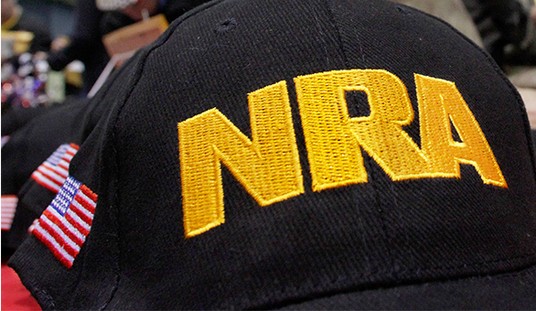Bearing Arms recently acquired a copy of a 1992 Federal Law Enforcement Training Center (FLETC) study, WEAPON SUITABILITY: Ergonomics in Semi-Auto Pistol Selection.
Unlike most other research conducted by FLETC, Weapon Suitability was not published to the Internet, and after reading it, it’s easy to see why many in federal law enforcement, the handgun industry, and even feminists would prefer that never saw the light of day.
In the late 1980s and 1990s, law enforcement agencies nationwide transitioned away from revolvers toward higher-capacity semi-automatic pistols. This transition in sidearms occurred at the same time long-standing hiring requirements based on sex and size were abolished in court battles, leading to smaller men and women joining law enforcement in significant numbers.
The transition from revolvers to semi-automatic pistols was driven by cost, capacity, and reliability factors, but few agencies (if any) gave significant thought to how well a wide range of officers could actually shoot the guns their departments were selecting for them.
The results was unsurprising: law enforcement officers often shot horribly with their new guns, with smaller men and women shooting far worse than their larger male peers.
The shooting test scores of 216 law enforcement officer candidates were compared as part of the study, where shooting 80% was the passing score. Females failed at a much higher rate (40%) than their male peers (4%), despite going through the same training.
Weapon Suitability was an attempt to find a scientific answer for why the smaller shooters were performing so poorly, and they found that the answer was that ergonomics and human factors had been largely ignored in the suitability of handguns reputedly “designed” for law enforcement and military service.
The study’s authors determined that weapon weight, recoil energy, bore axis, trigger reach, and hand size were the most important factors, and collected biometric data to determine what size and shape handgun grips needed to be for a wide range of shooters to use them.
Seventeen handguns in use by federal law enforcement agencies were studied to see if they met these human factors needs, including firearms from Beretta, Browning, Colt, Glock, Sig Sauer, and Smith & Wesson.
The study found that 50% of female officers could not reach the trigger of 4 of the handguns without compromising their grips, and that female officers in the lower 25% could not reach the triggers of 9 of the 17 without compromising their grips. In order to fire these guns at all, these shooters had to change their grips, compromising control, speed, and accuracy, and these problems were exacerbated if the pistol had a comparatively high bore axis and muzzle energy, creating more muzzle rise.
The measurement data collected by the researchers was extremely important; using this data, new handguns could have been designed with re-contoured grips and better grip angles to fit a much wider range of shooters, leading to much better accuracy, more shots on target, more officers saved, and fewer innocent bystanders hit by inaccurate fire.
Instead, while the research was heavily referenced throughout academic circles, it appears to have never been published on the Internet. The implications of this study have never been fully contemplated beyond a small circle of researchers and companies participating in the study in 1992, and remain unknown to most firearms designers to this day.
One can only guess as to why the FLETC report did not receive widespread publication, but the implications are profound for combat and law enforcement shooters, and selling the concept of separate “ladies guns” for female law enforcement officers would have been a political minefield.
In the end, it seems it was easier to relegate the report to microfiche and let it die the quiet academic death of most research papers, even though doing so likely led to law enforcement officers continuing to use guns that weren’t designed to help keep them alive.









Join the conversation as a VIP Member